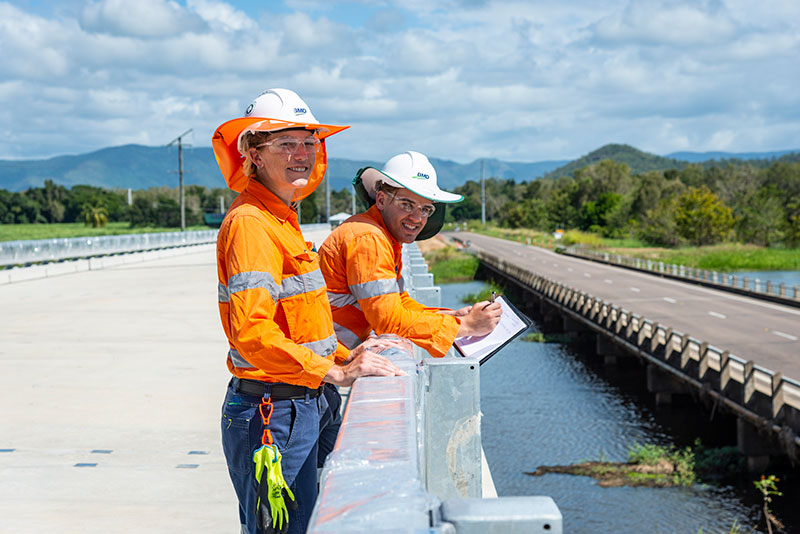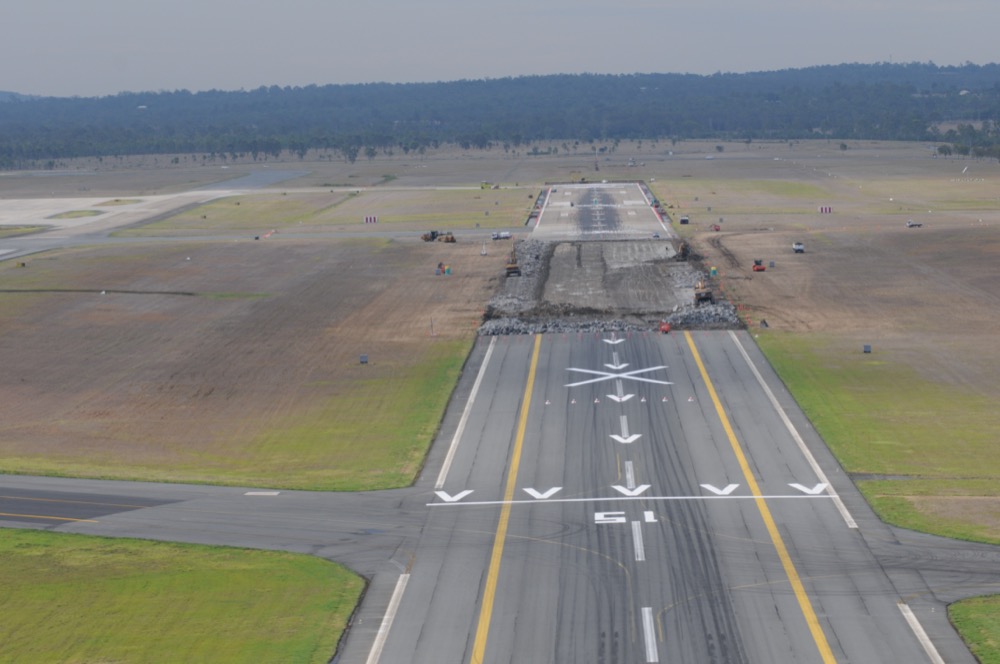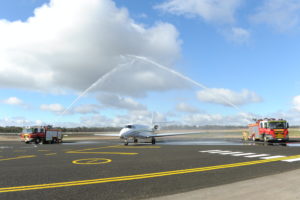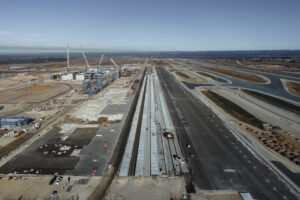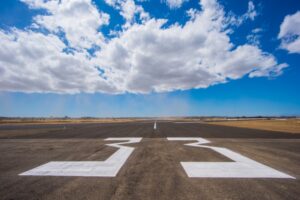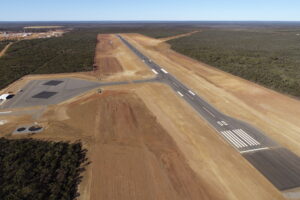Scope
BMD Constructions maintained effective working relationships with the client by adhering to contract time bars through the establishment of a register to identify due dates for all contract documents and enabling the works program to proceed faster and at a lower cost than originally anticipated.
The scope of work included:
- demolishing 9858m3 of existing runway concrete and 14,000m3 of taxiways and aprons
- excavating 18,000m3 of runway pavement and 10,000m3 of taxiways and aprons
- 75,000m2 of hydro seeding with bitumen emulsion spray
- installation of 13,800m3 of pavement
- 90,000m2 of resurfacing to the existing runway and taxiways
- removal and replacement of airfield ground lighting and entire runway approach lighting system
- reconstruction of 28,000m2 of heavy duty runway pavement.
Outcomes
Prior to the closure of the runway, BMD installed a temporary position approach path indicator on the main runway and temporary aircraft arrestors for the F18’s on the main and cross runways. Over a single weekend, BMD installed the displaced threshold equipment and all associated temporary line markings to Civil Aviation Security Authority specifications.
One of the key challenges on the project was the importation and placement of highly specified and technically demanding unbound, bound and asphaltic airport pavements and full quality certification within the tight delivery timeframe. In order to achieve the requirements, the project needed to be carefully planned, with major suppliers and subcontractors requiring detailed daily schedules for manufacture, supply and incorporation from three to four months prior to the start of works.
The demolition works of the existing 60 year old concrete pavement were completed over a five day period of day and night shifts. The spoil gravel material from the demolition works was relocated on base to extend a current hard stand area used for training purposes saving money on importing new material.
As a result of the detailed planning, up to 5,000 tonnes per day of pavement was placed and compacted to specification during the day, with full MARCO proof-rolling completed at night to maintain the program.
The airfield specifications took additional engineering to ensure the high aviation sector standards were met or exceeded. Ground conditions onsite were poor, with an extremely plastic subgrade and high water table. The solution included a combined lime/cement stabilisation of the subgrade and several unbound pavement layers of flexible pavement.

